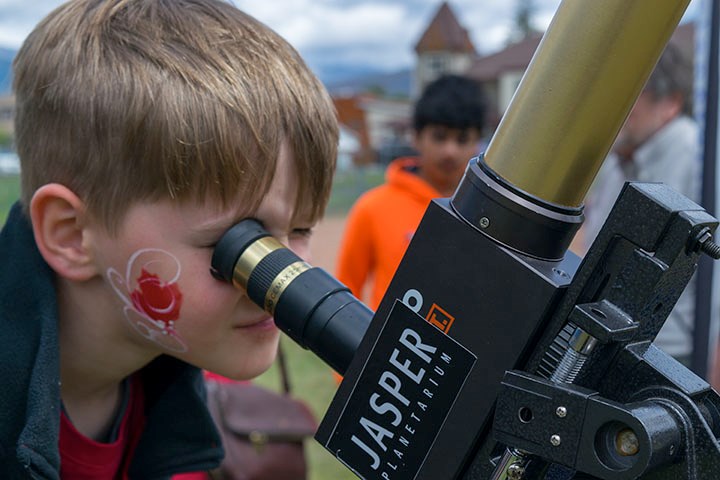by Peter McMahon | special to The 51░Á═°
This month the Red Planet comes closer to the Rockies than is has in 15 years
Anyone who runs a tourist attraction in Jasper gets their fair share of oddball questions: ÔÇťWhen do you guys paint the bottom of the lake that beautiful shade of turquoise?ÔÇŁ ÔÇťDoes this tram go to Vancouver?ÔÇŁ ÔÇťWhere can we buy an elk?ÔÇŁ
At the planetarium, we get our own ÔÇśinterestingÔÇÖ visitor questions: ÔÇťCan we see the Northern Lights if itÔÇÖs cloudy?ÔÇŁ ÔÇťHave you ever been to space?ÔÇŁ But the one that always gets us is ÔÇťI heard Mars is going to be as big as the full MoonÔÇŁ every couple of years, when the Red Planet makes its closest approach to Earth.
While Mars will never be so close that itÔÇÖs as big as the full Moon, it will be brighter and closer in July than itÔÇÖs been since 2003. ThatÔÇÖs when Mars got as close to us as itÔÇÖs been in 60,000 years.
Once in a Martian ÔÇśyearÔÇÖ
Because Mars orbits the Sun farther-out than Earth, a Martian ÔÇśyearÔÇÖ is roughly twice as long as a year on our planet.
When our two planets are on opposite sides of their orbits from each other, we can be nearly half-a-billion kilometres from Mars, with the Red Planet showing up only as a hard-to-spot dim star, when visible at night.
But for a few weeks every two years, Earth ÔÇścatches-upÔÇÖ to Mars in its orbit, gliding alongside it (relatively speaking) at a comparatively-close 50 million km or so.
When this happens later this month, Mars will become a blazing red-orange light twice as bright as Jupiter, second only to the Moon and Venus in the evening sky.
Where to look, what youÔÇÖll see
To see Mars at its best, look above Signal Mountain (to the southeast from much of the Jasper town site) around 1 am at the start of the month and after midnight in mid-July.
In late-July, when Mars is at its absolute-closest, you can see it coming off the southeastern horizon after 11 p.m.
While Mars should be so bright that itÔÇÖs hard to miss, on July 27 and 28 the planet will be even easier to spot, just under the full Moon.
An alien world, right next door
Through a telescope, Mars ranges in appearance from an orange dot barely wider than a star-like pinpoint of light, to a small orange-red globe (about the same apparent size as Jupiter) with some dark markings.
While astronomers hundreds of years ago believed these markings were canals, we know today they are just an absence of the iron-rich soil thatÔÇÖs rusted over eons, covering most of the planet.
Barring any large dust storms (one of which recently encircled the planet) you can see the fuzzy white ÔÇśbuttonsÔÇÖ of the Martian ice caps at one or both of the poles.
Like viewing the rings of Saturn or craters on the Moon, seeing details on Mars (or just the red light of Mars with the unaided eye and a little imagination) is one of the great bucket-list experiences of amateur sky-gazing.
Because Mars is the only place in the universe (besides the Moon) whose visible surface we can see from Earth, the 4th planet from the Sun has a special place in the imaginations of us humans, with early science fiction authors imagining epic tales of lost civilizations among the alien deserts of our interplanetary neighbour...so close, yet so far away.
Peter McMahon is a space author / journalist and general manager of The Jasper Planetarium




